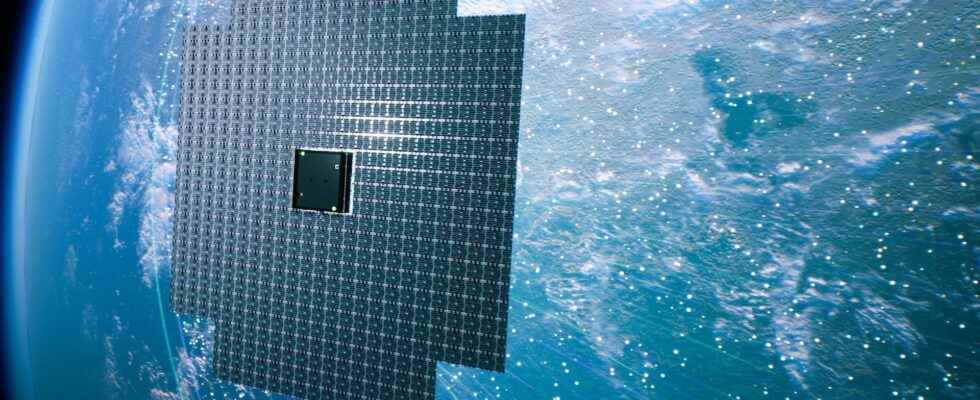AST SpaceMobile is launching a satellite that could be brighter than most other celestial objects. This worries astronomers.
The AST SpaceMobile company is in the process of attracting the wrath of astronomers, concerned about the celestial environment. As NewScientist reveals in an article published on September 9, it is about to launch a satellite which could turn out to be far too big (half a tennis court) and bright not to constitute an eyesore, or even a pollution altogether.
” The orbit contest to see who will have the most Internet customers continues. We’re going to launch a satellite that may, at times, be brighter than all the stars and planets in the sky. “, deplores for example Eric Lagadec, astrophysicist at the Côte d’Azur Observatory, in a tweet. His counterpart Miguel Montarges don’t think less: As if Starlink weren’t enough, now it’s AST mobile’s BlueBirds satellites threatening the dark skies. Equipped with giant antennas, they will be brighter than all the stars and planets in the sky, and will use powerful radio beams. »
Too bright satellites threaten the starry sky
Based in Texas, AST SpaceMobile dreams of flooding the sky with satellites in order to provide a mobile connection to its customers (in 4G and 5G). This ambition requires a huge antenna, which can be very bright due to its ability to reflect a lot of light. And since it must face Earth, it should be easily seen after dark — more so than most other celestial objects, be they satellites, stars or planets.
” Astronomers are logically worried. AST plans to launch even bigger satellites next year, called BlueBirds, which would be twice as big “, indicates the specialist journalist Jonathan O’Callaghan. He recalls that there are currently no regulations on the size that a satellite can make, nor on the light that it can emit.
There is also the problem of the radio signals emitted by these satellites. They could be powerful enough to negatively impact those of the devices used in astronomy and, in turn, distort measurements requiring extreme precision. A satellite alone would a priori be unable to do this, but there is a future where more and more satellites will be sent into the sky, whether by AST SpaceMobile, SpaceX (Starlink) or another firm. Without technical restrictions on what can be launched, the fear of astronomers seems more than legitimate.
